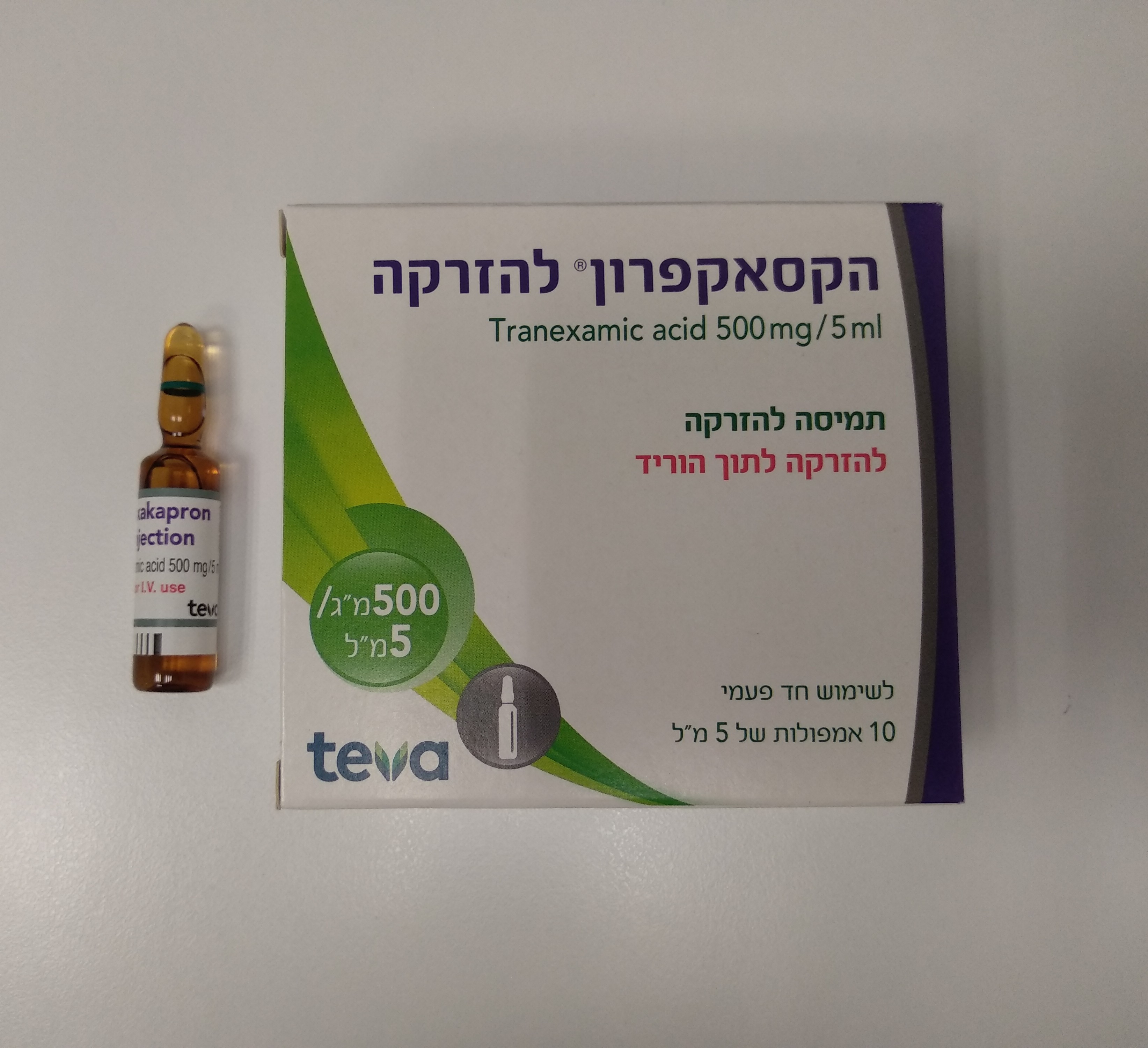Quest for the right Drug

הקסאקפרון להזרקה HEXAKAPRON INJECTION (TRANEXAMIC ACID)
תרופה במרשם
תרופה בסל
נרקוטיקה
ציטוטוקסיקה
צורת מתן:
תוך-ורידי : I.V
צורת מינון:
תמיסה להזרקה : SOLUTION FOR INJECTION
עלון לרופא
מינוניםPosology התוויות
Indications תופעות לוואי
Adverse reactions התוויות נגד
Contraindications אינטראקציות
Interactions מינון יתר
Overdose הריון/הנקה
Pregnancy & Lactation אוכלוסיות מיוחדות
Special populations תכונות פרמקולוגיות
Pharmacological properties מידע רוקחי
Pharmaceutical particulars אזהרת שימוש
Special Warning עלון לרופא
Physicians Leaflet
Posology : מינונים
4.2 Posology and method of administration Posology Adults Unless otherwise prescribed, the following doses are recommended: 1. Standard treatment of local fibrinolysis: 0.5 g (1 ampoule of 5 ml) to 1 g (2 ampoules of 5 ml) tranexamic acid by slow intravenous injection (= 1 ml/minute) two to three times daily. 2. Standard treatment of general fibrinolysis: 1 g (2 ampoules of 5 ml) tranexamic acid by slow intravenous injection (= 1 ml/minute) every 6 to 8 hours, equivalent to 15 mg/kg BW. Renal impairment In renal insufficiency leading to a risk of accumulation, the use of tranexamic acid is contra- indicated in patients with severe renal impairment (see section 4.3). For patients with mild to moderate renal impairment, the dosage of tranexamic acid should be reduced according to the serum creatinine level: Serum creatinine Dose IV Administration µmol/l mg/10 ml 120 to 249 1.35 to 2.82 10 mg/kg BW Every 12 hours 250 to 500 2.82 to 5.65 10 mg/kg BW Every 24 hours > 500 > 5.65 5 mg/kg BW Every 24 hours Hepatic impairment No dose adjustment is required in patient with hepatic impairment. Paediatric Population: In children from 1 year, for current approved indications as described in section 4.1, the dosage is in the region of 20 mg/kg/day. However, data on efficacy, posology and safety for these indications are limited. The efficacy, posology and safety of tranexamic acid in children undergoing cardiac surgery have not been fully established. Currently, the available data are limited and are described in section 5.1. Elderly: No reduction in dosage is necessary unless there is evidence of renal failure. Method of administration The administration is strictly limited to slow intravenous injection.

שימוש לפי פנקס קופ''ח כללית 1994
Hemorrhage occuring in some forms of surgery including prostatectomy, hematuria, menorrhagia, hereditary angioneurotic edema
תאריך הכללה מקורי בסל
01/01/1995
הגבלות
תרופה מוגבלת לשימוש בבתי חולים או אשפוז יום
מידע נוסף
